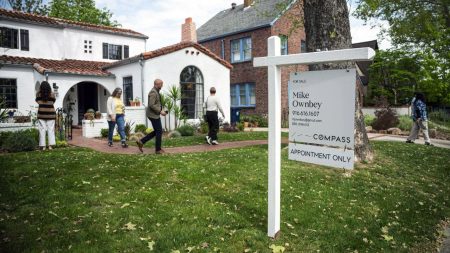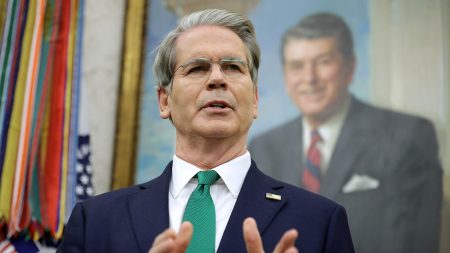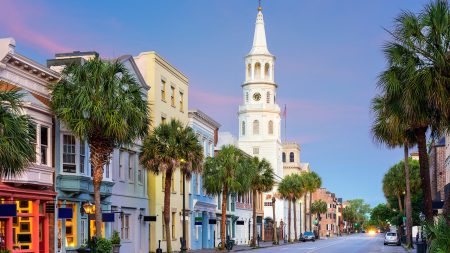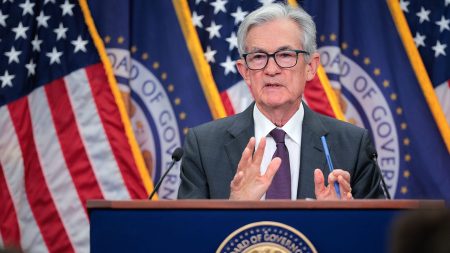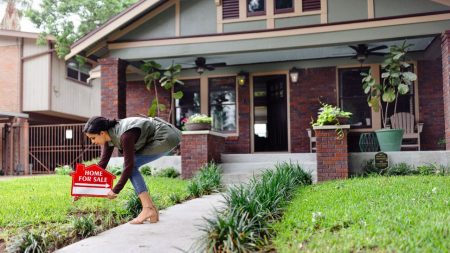At 100-day mark of Donald Trump’s second term, retirement security — already precarious for millions of Americans — is taking another serious blow. If you feel more anxious about your future today than you did three months ago, you’re not imagining it. Fear is rising, and it’s not misplaced.
From eroding confidence in Social Security, to increasing financial market instability, to threatening the caregiving system that supports older Americans, Trump’s early moves are accelerating a long-running retirement crisis. And if left unaddressed, the effects could last for decades.
Fear Is Causing People to Claim Social Security Early — and That’s a Big Problem
One of the most alarming signs of Trump’s impact is that more Americans are claiming Social Security early — locking in lower monthly benefits for the rest of their lives.
Anne Tergeson at the Wall Street Journal reports an uptick in claiming by 80,ooo people compared to last year. Someone told New School researchers that fear about Social Security’s future is driving people to make financially damaging decisions. One participant captured the mood perfectly:
“All my friends told me to take [Social Security] early before they take it away from me.”
This is a deeply rational fear. Trump’s tariff plans and tax cuts for the wealthy are shrinking the government’s revenue base, making attacks on Social Security more politically feasible. At the same time, reductions in Social Security services — field office closures, cutbacks in customer assistance — are silently cutting benefits, too, by making it harder for people to access what they’ve earned. Nerd wallet reports 34% of retirees are anxious about how tariffs will affect their investments, which is a high number considering most people don’t even have investments!
Fear feeds early claiming. Early claiming locks in lower benefits. Lower benefits guarantee higher poverty among retirees. It’s a vicious cycle, and it’s gaining momentum.
Financial Volatility Is Undermining Already Fragile Retirement Futures
Trump’s early-term economic policies are also increasing financial market volatility — and that spells trouble for anyone relying on 401(k)-style retirement savings.
About half of Americans aged 50–65 — roughly 30 million people — have significant money invested in the stock market. Many are watching their accounts swing up and down with every new tariff announcement, interest rate shock, or banking crisis rumor.
Unlike the defined benefit (DB) pensions that once anchored retirement security with guaranteed monthly checks, today’s 401(k)s leave individuals exposed to the full force of market ups and downs. Even if you do everything right — save, invest, rebalance — you could still retire just after a market crash and face a dramatically lower standard of living for life.
We tested the idea that voluntary, individualized retirement saving would work. After 40 years, the verdict is in:
It doesn’t.
Today, nearly 50% of older workers have no retirement savings beyond Social Security. And among middle-class older workers, 40% are projected to slip into or near poverty in retirement.
The “Edge” age-group — Americans between 50 and 65 — is rightly anxious. They are tracking every news alert, every market dip, because their future depends on it.
Attacks on Immigrants Could Gut the Care Economy
Beyond savings and Social Security, another retirement threat looms: the caregiving workforce is under siege.
Trump’s immigration crackdown directly threatens the supply of workers who provide critical long-term care for older Americans. In New York City, 60% of home health aides are immigrants. In Florida, it’s 60%; in New Jersey, 54%.
Caregivers are key to aging with dignity. Without paid care many people live with unmet needs, especially men, according to researcher Jessica Forden. And without enough aides, costs skyrocket, care quality falls, and more seniors are forced into unsafe or isolated living conditions. Family members — often adult daughters — end up picking up the burden, sacrificing their own careers and savings.
Retirement security isn’t just about dollars in an account. It’s about ensuring that when Americans reach old age, they can live with dignity, support, and respect. Gutting the caregiving workforce undermines that promise for everyone.
Retirement Security Was Once an American Success Story
We shouldn’t accept this deterioration as inevitable. America once led the world in building retirement security. In the decades after World War II, strong unions, progressive legislation, and widespread pension coverage made it possible for ordinary workers — not just the wealthy — to retire in dignity. Social Security was expanded. Medicare was created. Defined benefit pensions were widespread.
But starting in the 1980s, a political shift — symbolized by President Reagan’s firing of striking air traffic controllers — began to erode these gains. Employers started replacing pensions with 401(k) plans. Individual risk replaced collective security. Inequality began to widen.
By the 2000s, the damage was clear: Bush’s failed attempt to privatize Social Security normalized the idea that retirement was a “do-it-yourself” project, even as wages stagnated and the cost of living soared.
Today, the United States ranks poorly among developed nations for elder poverty. According to the OECD: Only 3% of Dutch elders live in poverty. 12% of Canadian elders do.
In the U.S.? 23%.
What Must Be Done — and Can Be Done
It’s not too late to reverse course. But doing so will require bold action — and a rejection of the failed policies that got us here.
1. Expand Social Security, Not Cut It.
Social Security is our most successful anti-poverty program. Expanding benefits and lifting the payroll tax cap can ensure solvency and increase protections for millions of retirees.
2. Pass the Retirement Savings for All Americans Act (RSAA).
The RSAA would create universal, portable retirement accounts for workers without employer-sponsored plans — modeled on the highly successful Thrift Savings Plan used by federal employees. RAND Corporation simulations suggest the RSAA would be cost-neutral after 20–30 years and could help 63 million Americans build retirement security right now.
3. Rebalance Retirement Tax Expenditures.
Over $300 billion a year in tax subsidies flow to retirement accounts — but disproportionately to high earners. Redirecting these subsidies could make a huge difference for ordinary workers trying to save.
4. Treat Caregiving and Retirement as Public Goods.
America must recognize that caregiving — much like education and infrastructure — is essential for a healthy society. Immigration policies must support, not sabotage, the caregiving workforce.
Fear Is Not a Retirement Strategy
The fear Trump has reignited in his first 100 days is real. But fear is not a strategy. Action is.
The good news? Americans have rebuilt before. Social Security itself was born in an era of economic fear and uncertainty. We can do it again because the choice is political. We can endure a future of widening elder poverty and economic instability or we can get back on track to secure a dignified retirement for all workers.
Read the full article here




